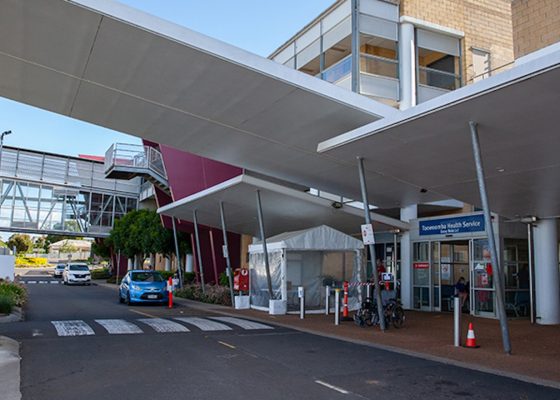David Crisafulli and Tim Nicholls have taken more than a few leaves from the Bjelke-Petersen Book of Bullpuckey. Don’t you worry about that.
I am old enough to have lived through the last 16 of Joh Bjelke-Petersen’s almost 20 years as premier of Queensland.
They were formative times – they turned me into the bolshie journo you see today, dear readers.
Joh was a do-it-first-apologise-later kind of guy. Except he never apologised. Or explained. Or made much sense at all, to be honest, particularly when he was talking to the media. He called press conferences “feeding the chooks” and getting a straight answer from him was a near-impossibility.
Here’s a classic Joh move:
- Roundly criticise former government’s plan;
- Delay and otherwise hinder that plan once in power;
- Get someone else to criticise the plan;
- Announce the same plan, plus a bit, with no costings and declare it a “rescue”.
Why am I waxing reminiscent?
Because this week the Crisafulli government pulled off just such an act of Bjelke-Petersen chicanery that would have made the old bastard proud.
But first, a little background.
As HSD reported on Wednesday, an independent review of the previous Labor state government’s hospital Capacity Expansion Program, found that the program was thrown together in six weeks in 2022, resulting in bad budgeting, bad timelines, and in some cases, misalignment of designs with what the local community actually needed.
None of which is good.
The CEP was a $9.785 billion project involving building new hospitals and expanding many others, bringing 2200 extra hospital beds into the system.
That expansion project’s budget has now exploded to about $17 billion, largely because of the aforementioned rushed planning and some truly awful engagement with the Health and Hospital Services. More like lack of engagement, to be honest.
Premier David Crisafulli and his health minister Tim Nicholls have hated the CEP from the get-go and have been delaying progress at some of the big builds for weeks – Toowoomba is a case in point – while they called in an “independent” review team.
In comes Klok Advisory, headed up by managing director Sam Sangster, who provided a comprehensive and fair report – here it is – that not only details where the CEP has failed, but also provides immaculate plans and options for how to continue the builds and expansions.
Read the whole thing, including its 42 recommendations, here.
And here is where it all becomes just a bit Bjelke.
Related
Having commissioned the review and trumpeted the results from the mountaintops, Crisafulli and Nicholls have now launched their Hospital Rescue Plan.
Guess what it does?
Exactly what the CEP planned, despite the fact the Sangster review called it “undeliverable”, plus it adds another 400 beds. There are no costings in the HRP, however, just a bunch of gloating about how far the original CEP budgets have blown out (so far).
But all the same projects are listed, just delayed and with a now unspecified budget, thanks to those extra 600 beds.
Now the Crisafulli government can deliver the previous government’s CEP with full righteous anger, any budget bombshells will be not their fault, forever more, and they will get all the credit for shiny new hospitals and car parks.
Classic.
Let’s take Toowoomba’s new hospital development as a case study.
As HSD also reported, Toowoomba has been delayed by the current LNP government, which was supposed to put out a call for a stage 2 gross construction sum award by 3 February 2025, for the call to be made by 1 May.
That hasn’t happened, and in fact, although stage 1 construction has been completed, that project has been delayed for weeks waiting for the Crisafulli government to allow cranes to move in for the next phase.
Those delays cost money, on top of any blowouts due to the Labor government’s bad planning.
According to the Sangster review, the original budget for the Toowoomba hospital was $1.3 billion. That budget is now forecast to hit $1.98 billion.
That blowout is down to:
- Direct trade costs – $214 million – are higher than the estimates applied by Health Infrastructure Queensland at the program announcement;
- Location has given rise to (a) a $17 million impact arising from higher site allowances at Toowoomba than for other JHG projects – nearly double the hourly site allowance ($11 per hour ) than seen at PA ($6 per hour) or Logan ($7 per hour); (b) $75 million impact from living away from home allowances – approximately 80% of workforce have a primary place of residence more than 90km from the site; and (c) $57.2 million for workers camp;
- Risk allocations: $70.4 million in procurement and insolvency risk;
- Escalation and contingency percentage allocations against all of the above;
- Support services – adding back into scope essential clinical service needs including imaging, rehabilitation, pharmacy and kitchens.
Add to that the need to develop an electronic medical records system – an obvious need that was not budgeted for in the original proposal and which has not yet been tendered for.
Plus that EMR system has to be incorporated at the remaining services at the current 1960s-era facility in the CBD or there will be risks to patient care, according to Sangster.
If that can’t be done in time, then the new hospital needs to have paper storage space added into the design, again at added cost.
Keeping the old facility open in some form at the same time as running a new hospital will cost an additional (unbudgeted for) $300-$400 million a year, according to Darling Downs HHS (and the Sangster review). And that doesn’t even include keeping the building safe and operational.
If the decision is made to abandon the old building completely, then additional services have to be added to the new facility, again at added cost and time.
The Sangster review offers up four possible solutions to the Toowoomba problem:
- Continue current project and proceed to GCS Stage 2 call with existing builder under existing contract;
- Cease the current project and replan the project to deliver a single stage redevelopment on the Baillie Henderson Hospital site to allow a single decommissioning of the current site;
- Cease the current project and replan the project to deliver a multi-stage development on the new site to allow a progressive/staged decommissioning of the current site; or
- Variant of option 3 – continue with current project but seek to reduce and remove scope elements that can be deferred to a future development stage; plan future stages of development on the new site in parallel with progressing initial development stage; renegotiate risk allocations with existing builder.
Sangster recommends option four.
But good luck finding out what the Crisafulli government’s “rescue plan” is for Toowoomba.
This is all Mr Nicholls’ shiny new Hospital Rescue Plan has to say about it:

That’s it. It’s farcical on a biblical, nay Bjelke scale. Don’t you worry about those details, guys.
Godspeed everyone. It is, as ever, a bumpy ride.




